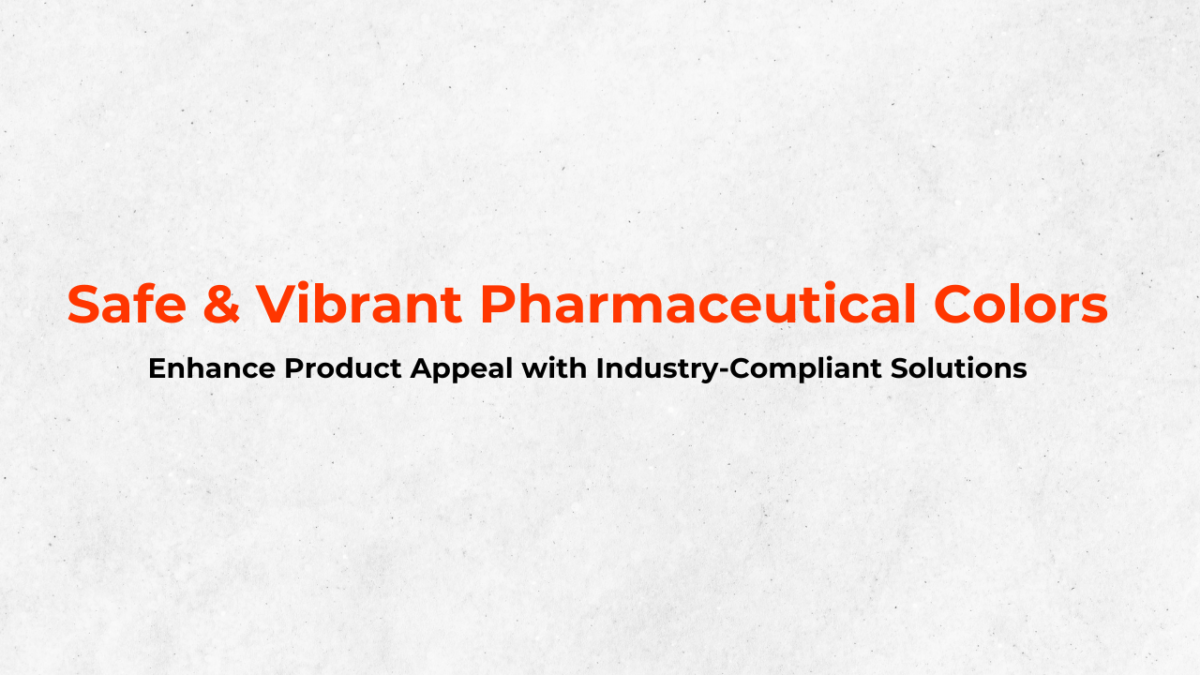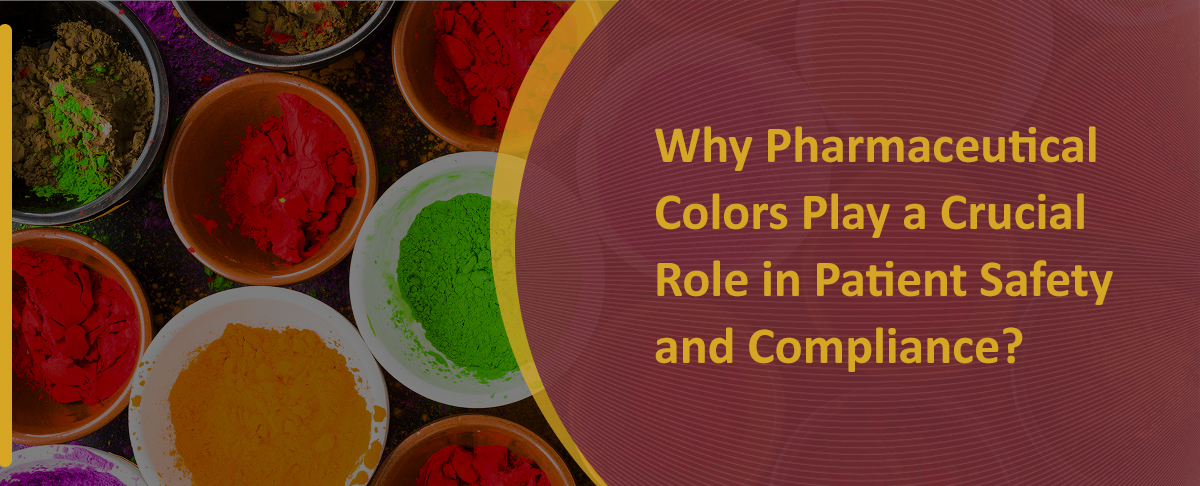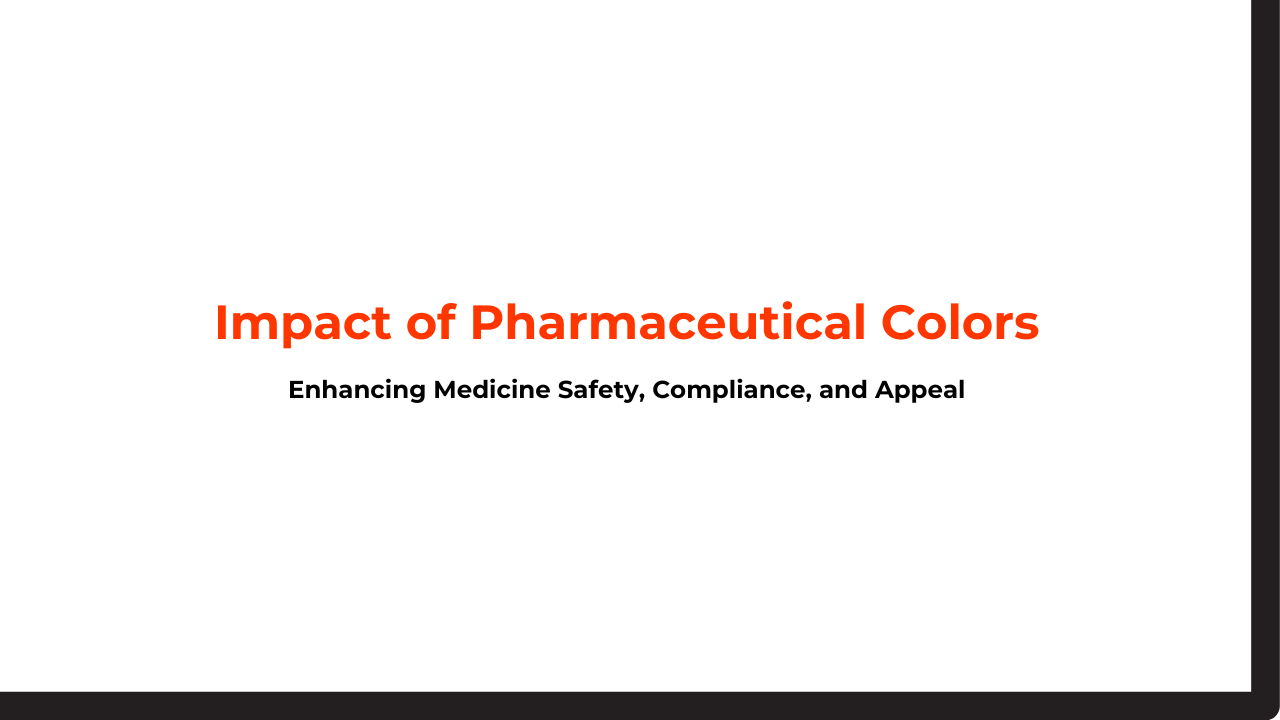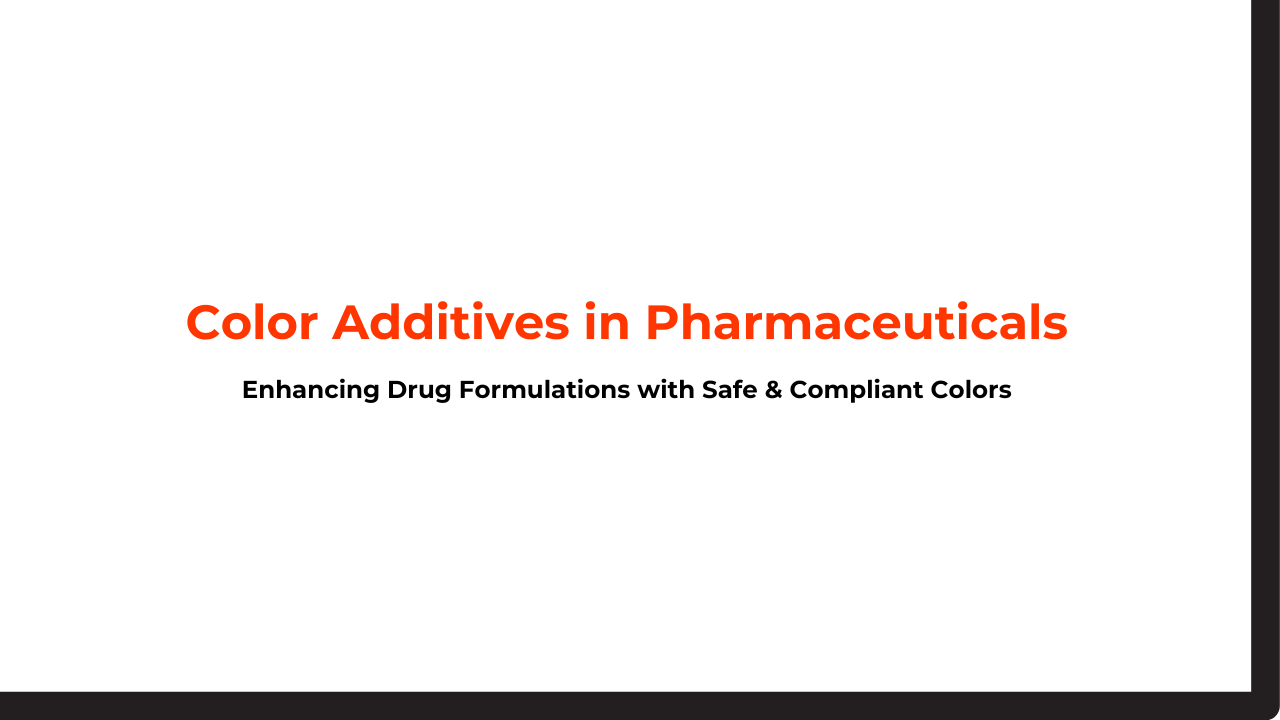Pharmaceutical colors are often used as food color additives. They add nice colors to products like syrup, tablets, and capsules. The main reason for adding pharmaceutical colors is to improve the look of products. This makes them more attractive to consumers. However, making the right color selection when it comes to pharmaceutical colors, colorants, or coloring agents is vital.
All right! In this blog post, you will learn what pharmaceutical colors are and how to choose the right one to suit your unique business needs. Businesses today need to emphasize trust, color consistency, and reliability. Selecting the right food colors for pharmaceutical dosage forms ensures the perfect formulation.
It’s important to emphasize colors with shades of blue, green, and white. Considering specific drug types, target audiences, and brand identity can help ensure consistency throughout the process.
If you are a business or an individual entrepreneur, this blog can help you. It will guide you on how to choose the right colors or colorants for pharmaceutical products.
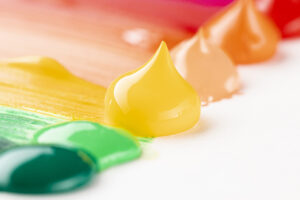
What Are Pharmaceutical Colors?
Pharmaceutical colors, colorants, or coloring agents are color additives that provide different colors to various pharmaceutical products, including syrups, tablets, capsules, and more. White, Blue, Green, and Red are pharmaceutical colors used in the industry.
Importance of Pharmaceutical Colors
The importance of pharmaceutical colors in tablet coating and other medical dosage forms can’t be overstated. Businesses should consider improving the product’s appearance, color consistency, and taste. These are some of the main reasons.
Coloring pharmaceutical drugs makes them look better. It helps with brand identity, patient compliance, and product differentiation. Choosing the right colors is important. It can help your product do well. Staying updated with color trends in cosmetics and pharmaceuticals will also make your customers happy.
Here are some of the top reasons that clearly explain the importance of pharmaceutical colors:
- Color Psychology
Businesses should think about how emotions connect to taste. This can improve the effect of color and food pairings in medicine. Fast-food chains adopt the color red following the yellow and orange colors. It gives a feeling of being famished, especially when someone sees a yellow or orange color.
White is most commonly used as a base color, symbolizing sterility, purity, and cleanliness. On the other hand, red is linked to passion and energy. Organic, natural, and eco-friendly food is well-suited to green and earthy tones. These colors with different hues attract consumers in many ways.
- Packaging and Branding
Food packaging can bring back memories and feelings. Use it to create strong emotional ties with consumers. Ensure that the packaging color matches the flavor of products whenever possible, creating strong branding.
Your product usually has just 1-2 seconds to catch attention on the retail shelf. This applies to both food and cosmetics. Therefore, it is important to accentuate flavor aesthetically to bring out the senses as much as possible.
- FDA Regulations
This is the most important thing to consider when choosing the right pharmaceutical colors for medical dosage forms. Make sure the color is approved by the right regulatory bodies, like the U.S. FDA, EFSA, and FSSAI. Regulatory agencies follow strict safety rules and quality checks. They make sure products meet their guidelines and are safe to use before approval.
The FDA regulates color additives. These are also known as coloring agents in pharmaceuticals, foods, and cosmetics. This is to make sure products are safe and work well.
EFSA and FSSAI check food colors for safety.
EFSA stands for the European Food Safety Authority.
FSSAI stands for the Food Safety and Standards Authority of India.
- Drug Type
Businesses need to consider drug types when choosing the right pharmaceutical colors for their drugs or cosmetic products. For example, red or blue with dark shades convey the message of strength, power, and relief.
Likewise, red is used to symbolize heart health in cardiovascular drugs. Light blue or green is best for soothing effects in allergy medications.
- Target audience
There’s a great psychology behind color selection based on different factors, including age and type. Elderly people are more likely to be attracted to soft, muted colors for greater visibility.
On the other hand, younger generations tend to like more vibrant, brighter colors. So, it’s essential to consider your target audience and select the color accordingly.
- Consistency and Accessibility
It’s important to consider color conscience in all marketing materials, such as packaging, websites, and advertising. This will also help you brand and market your products to the target audience more efficiently.
Ensure enough contrast when people with visual impairments need to read your colors.
Conclusion
The selection of the right pharmaceutical colors is important for visual appearance. It plays a crucial role in establishing a solid brand identity, building trust, and retaining customers like never before. Think about these factors when choosing colors for pharmaceutical products. This will help ensure quality, effectiveness, and branding for your target audiences around the world.
If you are still unsure how to pick the right colorants for your industrial needs, Hridhan Chem Pvt Ltd can help. This includes colorants for foods, drugs, and cosmetics. Hridhan Chem is a well-known maker and seller of high-quality colors and pigments. These are used in cosmetics, medicines, and food.

